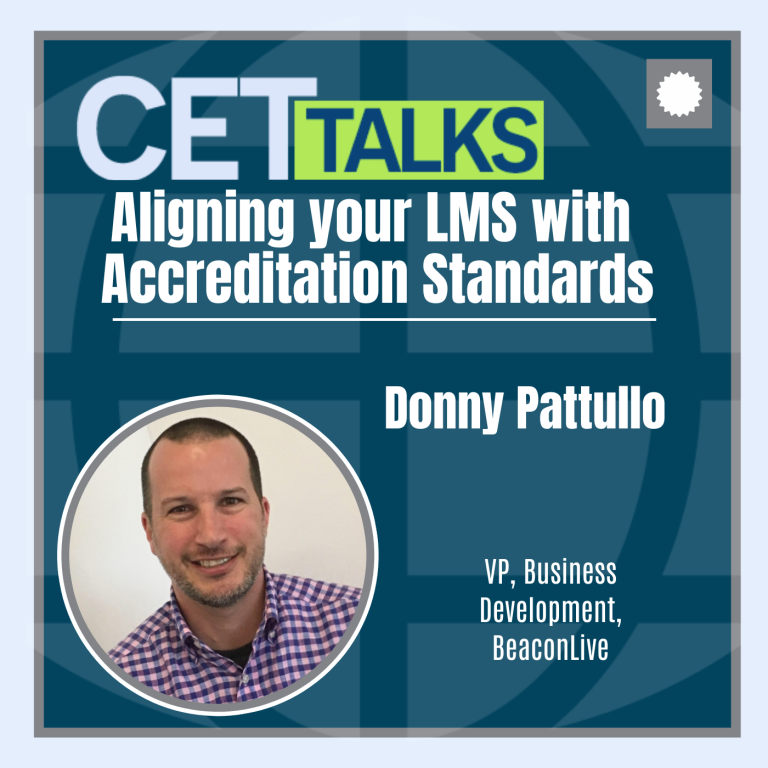Episode 15
.
CET Talks: Accreditation, Learning and Leadership
Episode 15
APRIL 14 2024 . 29 MINUTES
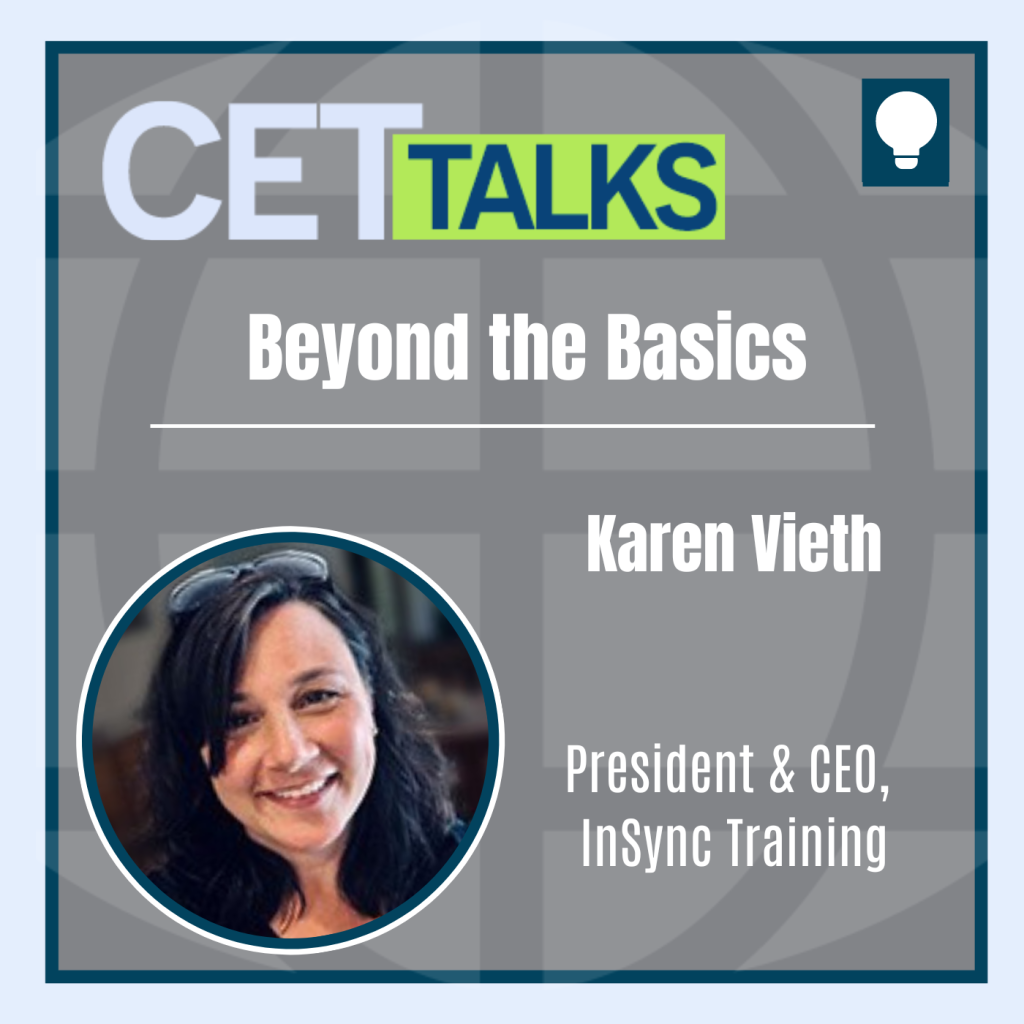
Beyond the Basics: Elevating Virtual Training through Expert Facilitation
In today’s workplace, the shift towards hybrid models has underscored the critical role of effective virtual facilitation. Despite the change, however, facilitators across the industry continue to struggle in their job function, resulting in learning experiences that lack quality and detract attendees from continued engagement. In this episode, Karen Vieth, the President and CEO of InSync Training, debunks some common facilitation myths, illustrating the nuanced challenges and innovative strategies essential for impactful virtual training. Join us as we delve into the future of virtual training, uncover the benefits of advanced facilitator training, and discover how organizations can enhance engagement and inclusivity in hybrid work environments.
Listen to the Podcast
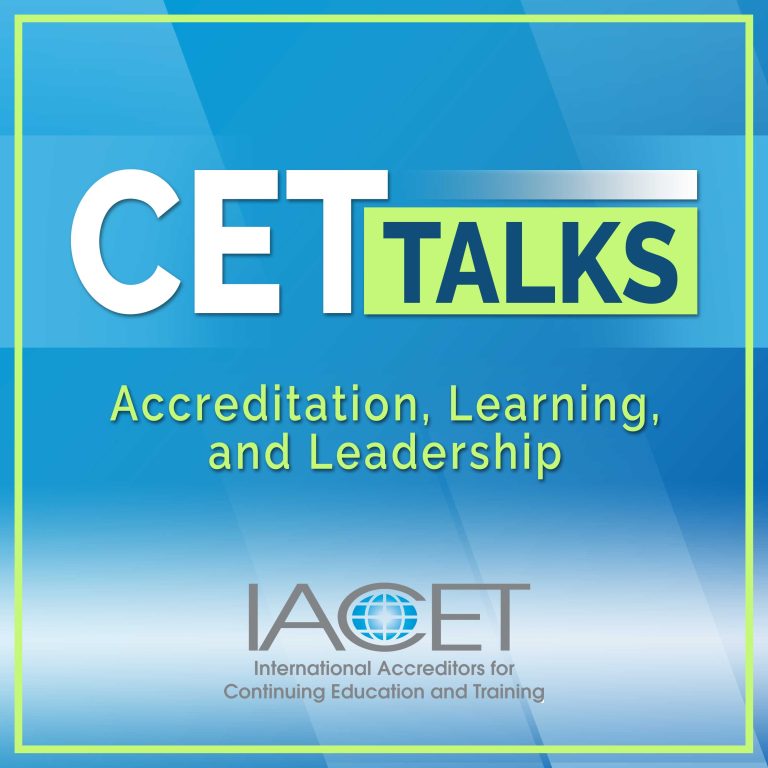
Welcome to CET Talks, the International Accreditors for Continuing Education and Training’s podcast, where we convene thought leaders in the continuing education and training ecosystem to share ideas, research, best practices, and experiences that promote the creation of a world that learns better. Your hosts are Randy Bowman, Interim President and CEO of IACET, and certified corporate wellness specialist Mike Veny.
In today’s workplace, the shift towards hybrid models has underscored the critical role of effective virtual facilitation. Despite the change, however, facilitators across the industry continue to struggle in their job function, resulting in learning experiences that lack quality and detract attendees from continued engagement. In this episode, Karen Vieth, the President and CEO of InSync Training, debunks some common facilitation myths, illustrating the nuanced challenges and innovative strategies essential for impactful virtual training. Join us as we delve into the future of virtual training, uncover the benefits of advanced facilitator training, and discover how organizations can enhance engagement and inclusivity in hybrid work environments.

Transcription
Host: Welcome to CET talks, the International Accreditors for Continuing Education and Trainings podcast, where we convene thought leaders in the continue education and training ecosystem to share ideas, research best practices, and experiences that promote the creation of a world that learns better. Enjoy the episode.
Randy Bowman: Hello, and welcome to CET talks. My name is Randy Bowman. I’m IACET’s president and CEO, and I’m here with my co-host, Mike Veny, a certified corporate wellness specialist, and CEO of an IACET-accredited provider. How are you doing today, Mike? It’s good to see you.
Mike Veny: Good, it’s good to see you, too. And hello to all of you out there. I’m the CET Co-host, Mike Veny. Randy, before we get started, I wanted to let you know that I gave a virtual presentation last week, but it was the first time since the pandemic began that I had to facilitate. In that particular presentation, I had to send people into breakout rooms, and it was really awkward. I didn’t know what I was doing at all.
Randy Bowman: I was just about to ask you, “How’d it go?” when you said “awkward”.
Mike Veny: It was awkward, and I know that there’s a lot of skills that people have to make it much smoother. I hope to learn some of them in the future, maybe even today.
Randy Bowman: Hey, you’re just in luck today. We have Karen Vieth with us, President and CEO of InSync Training. Before we introduce her, I just want to make sure that we acknowledge that InSync Training has been a valued sponsor of IACET for three years. They did our annual conference in 2021, 2022, and 2023. Furthermore, IACET has partnered with InSync Training in the past to provide some high quality virtual training experiences to our global affiliates. We want to make sure everyone realizes this. It underscores our commitment to promoting the best practices in guidance and continuing education and training industry.
Mike Veny: Now I have the honor of introducing our guest. Karen Vieth has an extensive background in advancing virtual education, starting from K to 12 teaching to becoming a curriculum and teacher trainer at Memphis City Schools. At InSync Training, she has served in various roles, including producer, facilitator, designer, director, vice president, and now president and CEO, focusing on creative, innovative, and virtual training solutions. So that being said, welcome to the show, Karen.
Karen Vieth: Well, thank you. Thank you very much for having me, Mike.
Mike Veny: Karen, I’d like to start with the rise of hybrid work models. Virtual facilitation has become a staple in workforce training. Can you share with our listeners why professionally trained virtual facilitators are critical for the success of training programs and in different environments, despite the common belief that virtual training is old news?
Karen Vieth: Absolutely, I’d love to, because that’s really funny. People say virtual training is old news. People used to say, “Virtual training is what?” prior to the pandemic. And now, three years, four years in, we’re like, “Virtual training is old”, but the reality really is we’re only just scratching the surface for what’s really possible in this space. If you think about virtual training being around for a while—I’ve been in this space for over 24 years, but the rise of the hybrid work model has really brought it to the forefront. Every organization, every grandmother in the world can hop on Zoom, right? Prior to the pandemic, nobody could. People would say, “What is that? How do I do that? What do you mean I could go virtual versus face-to-face?” Here we are in this virtual realm, but it’s just scratching the surface. With that comes the true need for professionally trained virtual facilitators. Back to you, Mike, just a few minutes ago, you mentioned you were in the situation where you were facilitating. You really had to facilitate the group, right? Not just speak to them but speak with them. Getting some virtual facilitation training and certification is vital to be able to engage the audience. If we think about engaging the audience online, it’s a whole different ballgame compared to in-person training. You can’t rely on the same physical cues or the same energy in the room the way that we do in a face-to-face environment, but a well-trained virtual facilitator knows how to create an engaging, interactive atmosphere in this virtual space, keeping participants really tuned in and actively engaged.
Randy Bowman: Karen, what are some of the challenges that organizations face when they do rely on untrained staff? Particularly with the concept that all the virtual trainer needs to know is how to use the software, that it’s just a technical training, and that’s all they need to know.
Karen Vieth: Gosh, where do I start? I mean, that’s first, right? The big idea is that, ooh, anybody who’s tech savvy can lead a virtual training session, but being able to navigate Zoom or teams, as you said, is just the tip of the iceberg. Technical knowledge is extremely important, but it’s far from the skill that’s needed. I think one of the biggest challenges outside of the technology is bringing in individuals that are subject matter experts. If you’re really, really good at the work that you do, you must be a really great trainer, right? So let’s bring you into a virtual environment and allow you to train. Well, that challenge is, yes, they might be technically savvy. Yes, they might know the content well, but are they able to engage a group? Keeping people involved and interested in a virtual environment is tough. Without the right skills, sessions can quickly turn into monologues where you’re just speaking at people versus speaking with participants. That’s when we start to see people checking boxes and going, “Yep, that was fun.”
Randy Bowman: Oh, I’ve been there. You’re like, “Please, somebody say something to me. Help me out here.” Based on your experience, could you outline some of the best practices that organizations can adopt to ensure their virtual training programs are effective, engaging, and inclusive, especially in the hybrid work environment?
Karen Vieth: Absolutely. Get certified. I know that’s funny, but it’s true. I like to say to everybody, I started out in academia, and I trained to be a teacher. Here we are today asking individual subject matter experts who trained to be, I don’t know, an engineer or a nurse, “Why don’t you go train everybody? You’re really good at your job but go off and train everybody.” With the shift to hybrid work and designing and delivering effective, engaging, and inclusive virtual training programs, it’s more important than ever. So as organizations start to adopt these training programs, we do have to think about a few things. The first thing we have to think about is embracing personalization. Each learner that that comes to our sessions, they’re unique. They’re unique in the way that they absorb and process information. Leveraging tools like AI and different data analytics that we can capture before, during, and after live lessons is critical to make sure that we’re mapping out to those individual needs. That then leads us to fostering interactivity and collaboration in the moment. Virtual training shouldn’t be a one-way street. We need to encourage the interaction, the use of the technology, but also not just the use of it, but how it impacts their overall learning transfer. Number three, I think, is vital. As we start thinking about virtual training more and more, and we start thinking about the hybrid environment, we think about the shift that the employees are pushing the leadership because of the pandemic. That is, “Meet me where I am, make me included.” Make sure that as we are approaching virtual training and the hybrid workforce, that we’re ensuring accessibility. Inclusivity means making sure everybody cannot just access, but truly benefit from your program. It’s not a matter of “Randy is sitting in his home office, and he gets to join Mike in the physical location.” It’s “How do we include Randy in that session?” Making sure that we create a journey for individuals to participate in, that they’re able to join virtually, that they’re able to communicate with the individuals live and online, but also in that self-directed learning. I guess number four would be creating a blended learning journey so that we’re not always forcing people to be in the live classroom, but we’re also connecting with them outside of it.
Mike Veny: Karen here at IACET, we are all about measuring things. We’re all about analytics and standards and I want to talk about analytics. This is very important, especially for the IACET-accredited providers listening, those of you who are out there thinking of becoming a provider or have started the application process. Analytics play a crucial role in shaping and improving training programs. What specific data or analytics should organizations focus on to assess the effectiveness of their virtual facilitators and training programs, ensuring they meet the diverse needs of their workforce? And with that, is this an intangible measurement that you have to use for virtual facilitators or tangible or combination?
Karen Vieth: This is something that’s near and dear to my heart. Data is something that I have always looked at from the time I was in academia till now. I think it is absolutely powerful to take a look at analytics, to see how they shape and improve our training programs. First off, what matrix? In my opinion, we need to have matrix in the moment, in the live and online session. We need to have matrix outside of the live and online session, and then we need to look at it from a global perspective. If we think about engagement metrics, this could include things like participation rates, comments, questions posted during the session, the use of interactive features like polls or breakouts or emoticons, within Zoom, Teams, or whatnot. These metrics give a sense of how actively involved someone might be. There are some platforms that go as far as having a little meter on the side, and it’ll show you like, “Ooh, Randy’s really engaged.” But it’s not necessarily that I look at the meter; it’s that I gauge how engaged he is. Is Randy able to communicate with me, the facilitator? Is Randy able to communicate with the other learners within the group? Is Randy’s engagement going beyond just ticking a box, so I know he’s interacting? Is it going deeper than that, so I know he’s absorbing the content and maybe even communicating and saying how it’s going to impact him back on the job? So, that’s one piece. I think it’s really valuable that we utilize tangible data, but it’s not just observation. It’s being able to utilize that during the session, but then after the fact, we need to step away. We need to understand if participants are actually grasping the knowledge and the skills that are being taught. Maybe that’s assessments, maybe that’s quizzes. Maybe that’s following them back on the job. Maybe it’s practical application and the skills in the workplace. Maybe it’s role plays, teach backs, practice, whatever. But what we have to do is see that positive change in their work performance after a training session. That’s really a strong indicator of effectiveness, of figuring out how we follow them from the training back on the job. Is that the role of the manager? Is that coaching and mentoring? But that’s something that I think has to happen. Then, it’s the feedback from the participants themselves. Go back to Kirkpatrick’s and the smile sheets. We think about surveys and questionnaires, and we do this a lot at the end of every single session. Did you find it helpful? Was the pace right? Did you feel comfortable participating? All of those pieces are extremely important, but what did they learn? As we think about asking participants their feedback, go beyond the smile sheet, go beyond, “How are you going to utilize this back on the job? What is it going to do for you?” Then the biggest piece is, data’s only as useful as the insights we draw from it, whether that is a tangible survey, or in the moment I’m seeing Randy nod at me and utilizing those cues within the data to make a difference, to make a shift. If we’re not regularly reviewing the data and acting on those matrix, then we’re not going to improve our facilitators or a training program. I would emphasize that whatever matrix you lay out, make sure at your organization, you take the time to review it and act upon it. Otherwise, it’s just data that you’re putting on a shelf.
Randy Bowman: So true, Karen. So true. As we act on the data, that forces us to evolve. How do organizations and professionals keep pace with these changing demands, especially considering the unique challenges of engaging remote and hybrid learners?
Karen Vieth: You know, Randy, I think, I’m going to say it again. I’m going to say get certified. I’m going to say become a lifelong learner. Create a culture of learning at your organization. Something that Jennifer Hoffman, owner and chief strategist now at InSync, says all the time is take the time to give yourself the same caliber of training you’re expected to give your learners. The way we work and the way we learn is changing constantly. That means the skills that we need to become good, great, even better. Virtual facilitators are changing too. We have to stay curious and open to learning new things. If we think about taking professional development courses, we think about different webinars, we need to stay up on the trends that are happening. I’m going to just say the elephant in the room. AI is out there and there’s all kinds of different thoughts around artificial intelligence and learning and development. Let’s face it, we’re all pretty curious about how it can impact us. So stay curious, figure out how you can utilize these different tools in the virtual environment, whether they’re third party tools like MentiMeter, or they’re a Zoom platform, or they’re SurveyMonkey. How are we going to utilize these different tools to help us learn and grow? It’s not just a matter of how to teach content or “Yeah, I know how to teach pharmacy technicians how to figure out the formulations of counting the drugs to put in their pill bottles or to dispense the medications.” It’s “How do we continue to interact and connect with people?”
Mike Veny: Speaking of trends with organizations increasingly operating on a global scale, what strategies would you recommend for addressing the varied cultural and regulatory requirements affecting virtual training across different regions?
Karen Vieth: That’s another great one. As a global organization, at InSync, we work with teams all over the world. We have to think about how different cultures and rules can affect our virtual training. First off, we have to do our homework. I think that’s really important. We have to get to know the cultures of the people that we’re going to be working with, understand their customs, understand their values, understand ways of communicating. This is going to help us, first and foremost, to make our training respectful and effective. I think it’s important to not just think about avoiding misunderstandings, but also about valuing diversity. Making everybody feel included, not just able to attend, but that we’ve done our homework, that we understand. Beyond that, we have to think about some regulations. Different countries have different laws about data protection, about video, about employment rights, you name it, they’re there. It’s worth getting some advice to make sure that your training program doesn’t accidentally step on toes. Let’s not forget about the practice. Practical things like time zones, languages—those two things can make a big difference on how well your training is received. If somebody has to attend your training at two in the morning, or they have to listen to the recording, that’s not fair, right? Plan your sessions at times that work for everybody and consider using translation services if needed, or again, AI, to translate, to provide that inclusive opportunity for all. Again, I go back to every team is unique, every learner’s unique. Keep that open mind and be ready to adapt your strategy. It’s a balancing act. There’s one other thing that I think is super important when we’re thinking about different regions and different cultures; make sure to take the time to pronounce names correctly. There is nothing worse than being called a different name than you actually are. If you’re used to working in the US and there’s a Karen and a Randy and a Mike, you’re probably not going to mispronounce those names. But if we don’t take the time to get to know the people in our group and, and to be respectful enough to find out how to say somebody’s name, they’re probably going to check out within the first time or the third time or the fifth time you mispronounce it.
Randy Bowman: Thank you. That’s very insightful. Congratulations on your recent promotion to President, CEO of InSync. Before that, I know you served for a long time as the vice president of Virtual Learning Services, so you have a very unique perspective on addressing the challenges of virtual training. Can you describe how InSync’s virtual facilitation certificates prepare facilitators to excel in the virtual environment? If you could, share with the listeners a success story where an organization, a person, got this certificate and it made a significant difference for their organization.
Karen Vieth: Absolutely. It’s been a pleasure and thank you so much for the kudos there. It’s been a pleasure to share about the impact that our work at InSync has had. Transitioning from Vice President of Virtual Learning Services to President and CEO has definitely been challenging, different, but it’s provided me a holistic view of the challenges at virtual training. I’ve been able to see firsthand how our certifications prepare facilitators to truly thrive in this environment. I’ve been with InSync for 18 and a half years, so I started as a facilitator and a producer. I’ve been on that side. I’ve been on the side of helping create solutions for organizations. I think what sets our virtual facilitator certification apart is the emphasis on engagement, environmental, emotional, and tech, intellectual engagement within the virtual and hybrid learners. That engagement is rooted in science, in brain-based science and research that our Director of Research, Chip Dye, has been doing over the last five years. We believe that the key to successful virtual facilitation is creating that environment where learners are not just physically present, but mentally and emotionally invested in their learning. This involves nurturing emotional engagement and fostering that sense of community among learners. I think that a lot of times in the virtual setting that can be lost. If I think about a success story, we had an instance where a large multinational corporation approached us. This was prior to the pandemic. They had a geographically dispersed team. They were in the traditional training method. They were struggling to keep the pace with the demands of the global digital workforce, dipping their toes into that virtual space. After their trainers went through our virtual CER facilitator certificate, they then continued on with us a little bit for some handholding; I’ll call it coaching, mentoring. They went through the six week course, they did their teach backs, we blessed them with their certification, and then we helped move them into transitioning that back on the job. I’m going to go back to what I said earlier about pharmacy technicians. It actually happened to be pharmacy technician content. You can only imagine those pharmacy technicians needed to be in-person to be able to look at the medications and whatnot. Anyway, long story short, we helped coach them on how to design their content to be delivered in the virtual environment. We worked directly with the facilitators after they went through the certification, to apply those skills into real life training that they had to do. This has been five plus years, and they still come back with their new facilitators and have us conduct those rehearsals and those training sessions with their new employees. What they saw was a significant uptick in both learner engagement and knowledge retention. They were able to streamline their training processes, improve team collaboration, and effectively upskill their global workforce. It was really a game changer for them.
Randy Bowman: So at IACET, we want to foster a world that learns better. We like to end each and every one of our podcasts by asking you, our guest, Karen, what does a world that learns better look like to you?
Karen Vieth: Hmm, a world that learns better is one where learning transcends physical boundaries and is integrated into our everyday work, including a virtual and hybrid environment, but not only a virtual and hybrid environment. I think in this world, corporate training initiatives are no longer confined to the traditional classroom. I think, instead, they meet learners where they are, where they want to learn, where they learn best from, delivered through innovative platforms that break down all of those geographical barriers and make learning accessible for everybody.
Mike Veny: Well, Karen, thank you very much for delivering such a deep interview with so many things to think about. Randy, I’m thinking about my takeaways. The one takeaway that I am going to have to apply immediately is I need to take virtual facilitation as seriously as I take other channels that I deliver learning experiences through, and I have to learn to measure it. What about you?
Randy Bowman: Mike, I loved Karen’s talk about connecting with the individual. So many times she talked about connecting with the learner, getting the learners connected with other learners, and that engagement at that level. Probably the biggest line was that we don’t want learners to just be able to access the training, but to benefit from the training and doing that through the personalization very much a key. That’s what I took away. Once again, Karen, thank you for being here. As we wrap up today’s discussion on the importance of quality virtual and hybrid trained facilitators, we’d love to hear from you, our listeners, what are some of the best or roughest virtual training experiences you’ve experienced, and how did the facilitator either improve the situation or make it harder to stomach? We’ve all been in both. Please share your insights on our LinkedIn page, as your stories can provide invaluable lessons and inspiration for others navigating similar paths. Don’t forget, you can submit topics, ideas, suggestions for guests and other feedback on the CET Talks podcast page of the IACET website. We certainly hope you’ll subscribe to this podcast on your favorite podcast platform so that you don’t miss any of these great episodes. Thank you so much for joining us today, and once again, thank you, Karen. It’s been a great pleasure.
Host: You’ve been listening to CET talks, the official podcast of IACET. Don’t forget to subscribe to the podcast on Spotify, Apple podcasts, or wherever you listen to podcasts. To learn more about IACET, visit IACET.org. That’s I-A-C-E-T.org. Thanks for listening, and we’ll be back soon with the new episode.
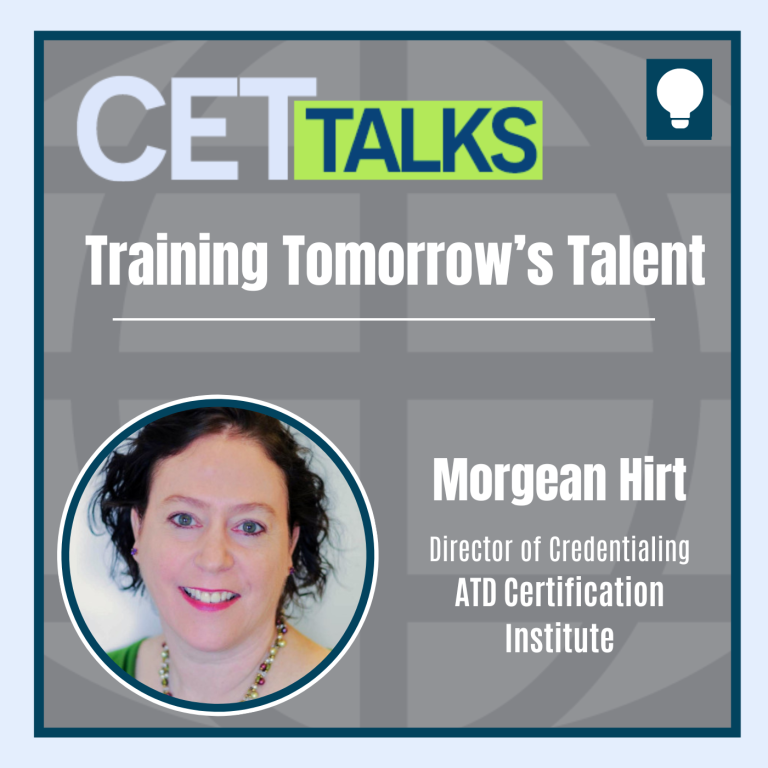
Episode 31: Training Tomorrow’s Talent: Exploring Certification, Standards, and Impact with ATD’s Certification Institute
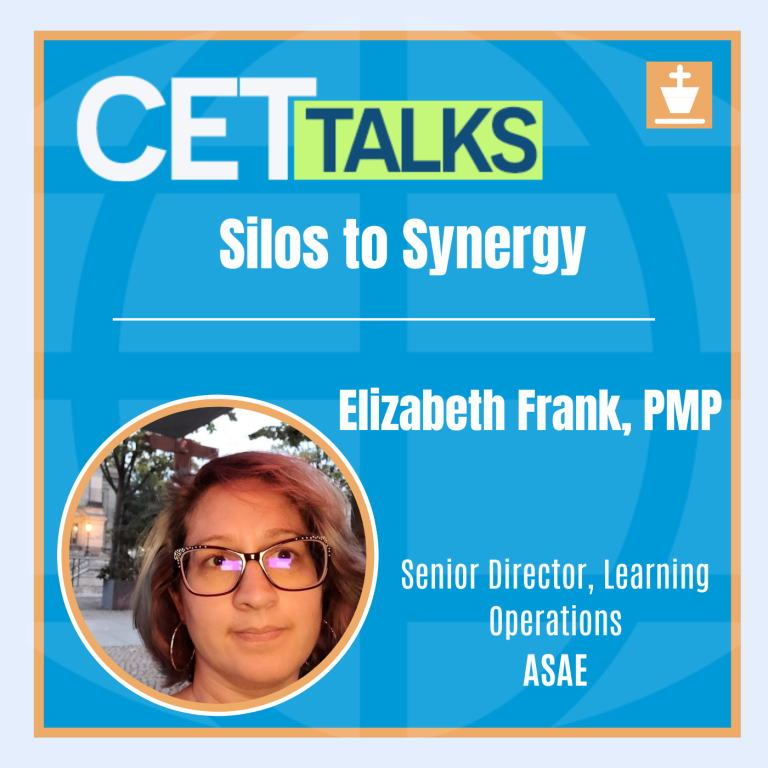
Episode 30: Silos to Synergy: Holistic Approaches to Creating Collaborative Learning

Episode 29: Credentials in Crisis: Challenges and Opportunities in Modern Education Recognition
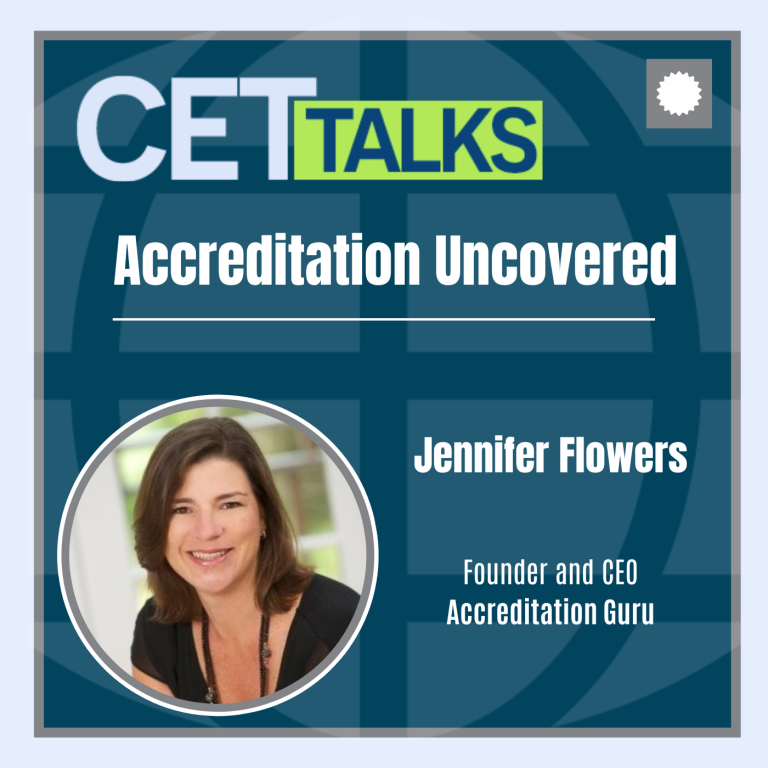
Episode 28: Accreditation Uncovered: Essential Insights from an Industry Leader

Episode 27: Two Truths with a Lie: Managing the Myths of Modern-Day Learning

Episode 26: From Bending to Blending: Best Practices in Integrating Externally-Created Content

Episode 25: From Insight to Action: Charting the Career Path of a SME-turned-ISD

Episode 24: Cultivating Careers: The Power of Employee Engagement for Organizational Success

Episode 23: Igniting Imagination: Crafting Creativity in Training Environments
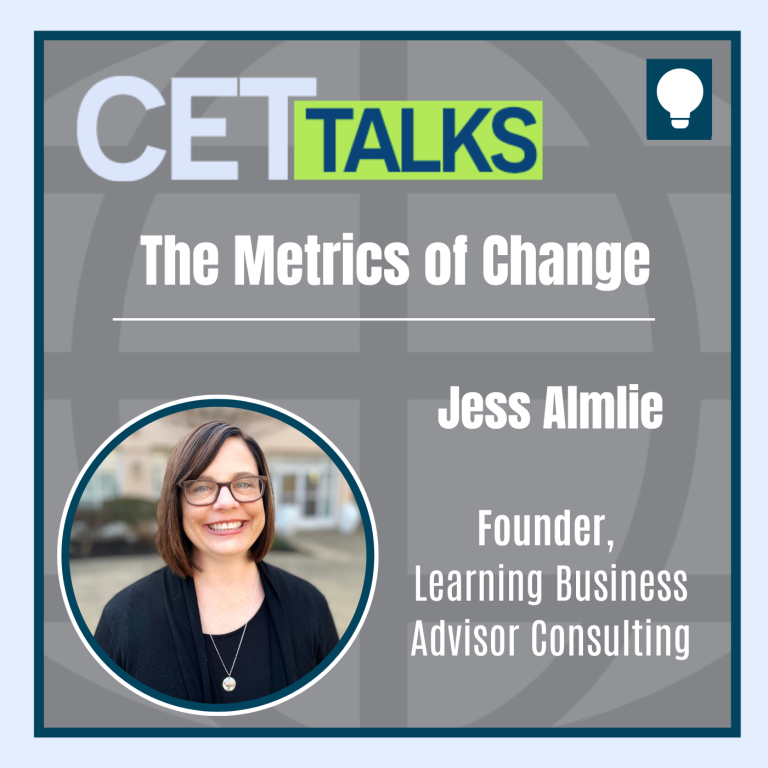
Episode 22: The Metrics of Change: Navigating Purposeful Measurement in L&D
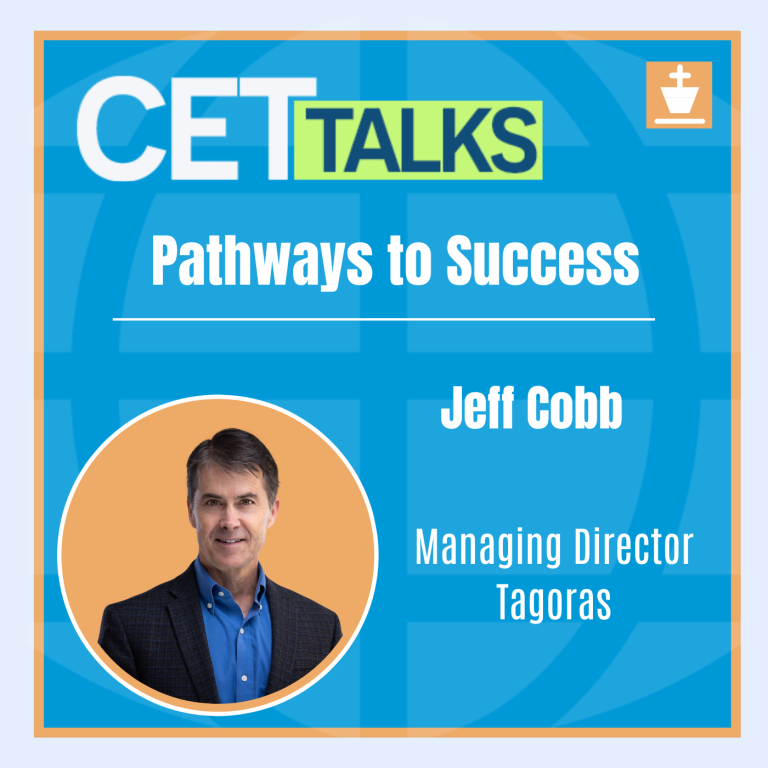
Episode 21: Pathways to Success: The Value of Lifelong Learning through Digital Credentials
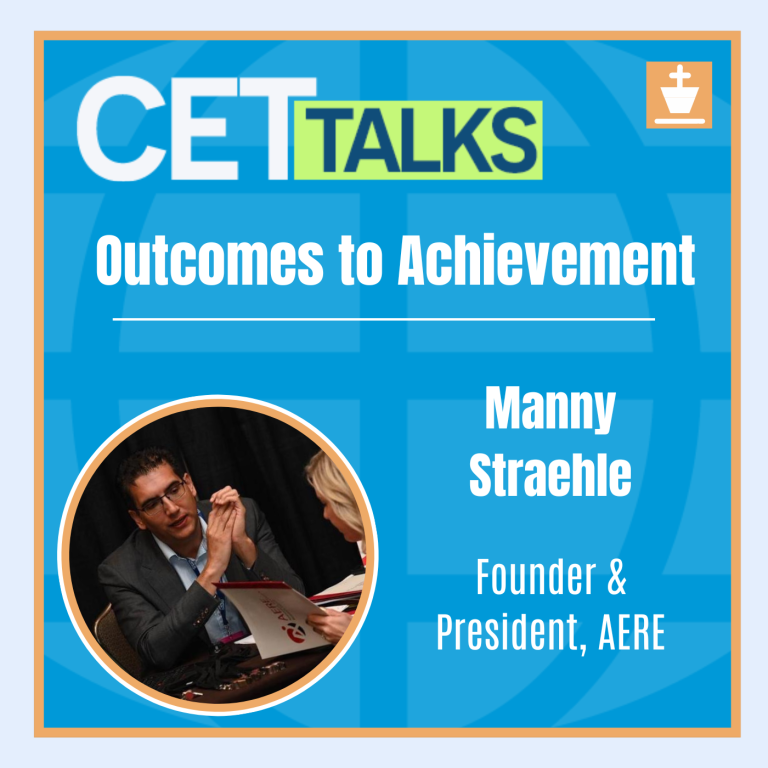
Episode 20: Outcomes to Achievement: Crafting Tomorrow’s Workforce Through Competency Models
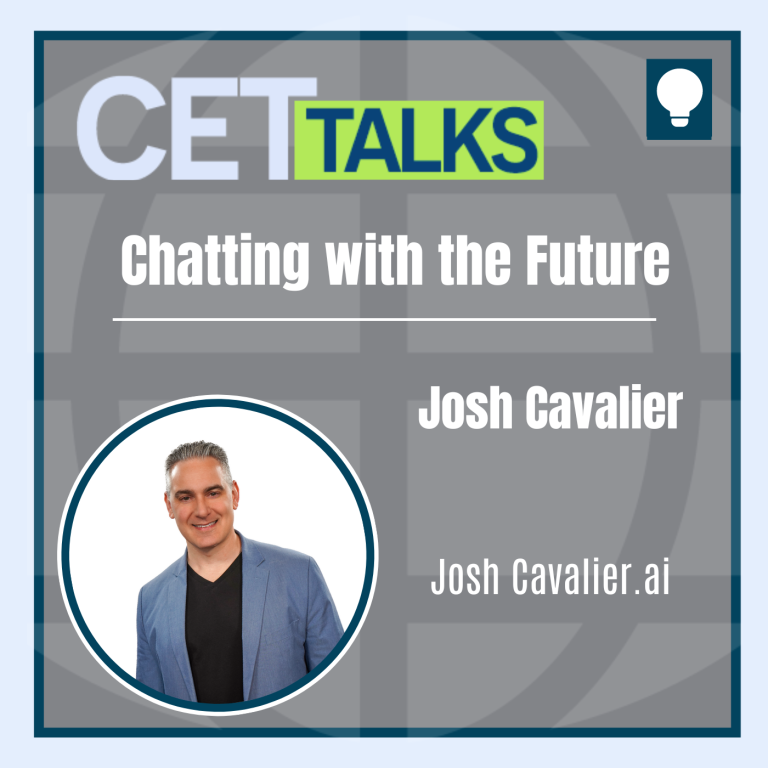
Episode 19: Chatting with the Future: Enhancing AI Output Through Prompt Engineering
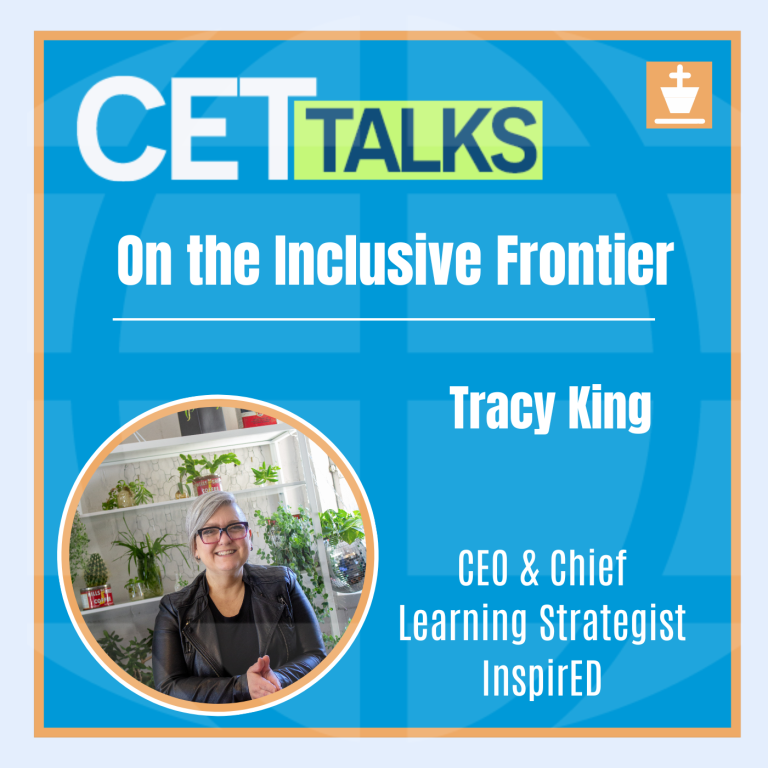
Episode 18: On the Inclusive Frontier: Harnessing Neurodivergence in Modern Training

Episode 17: Designing with Purpose: Strategies for Accessible e-Learning Development
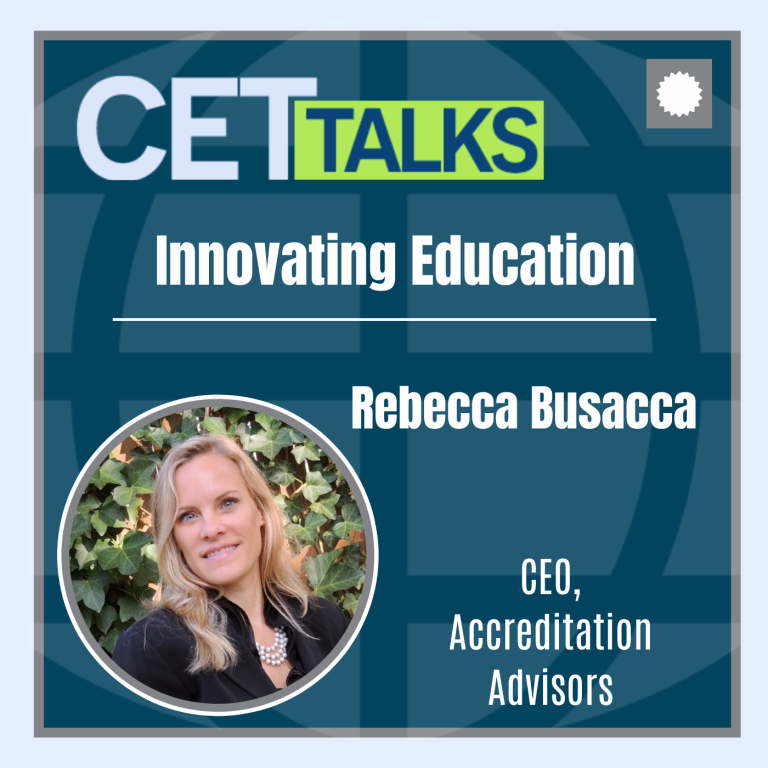
Episode 16: Innovating Education: Navigating Accreditation for Short-Term Training

Episode 15: Beyond the Basics: Elevating Virtual Training through Expert Facilitation
